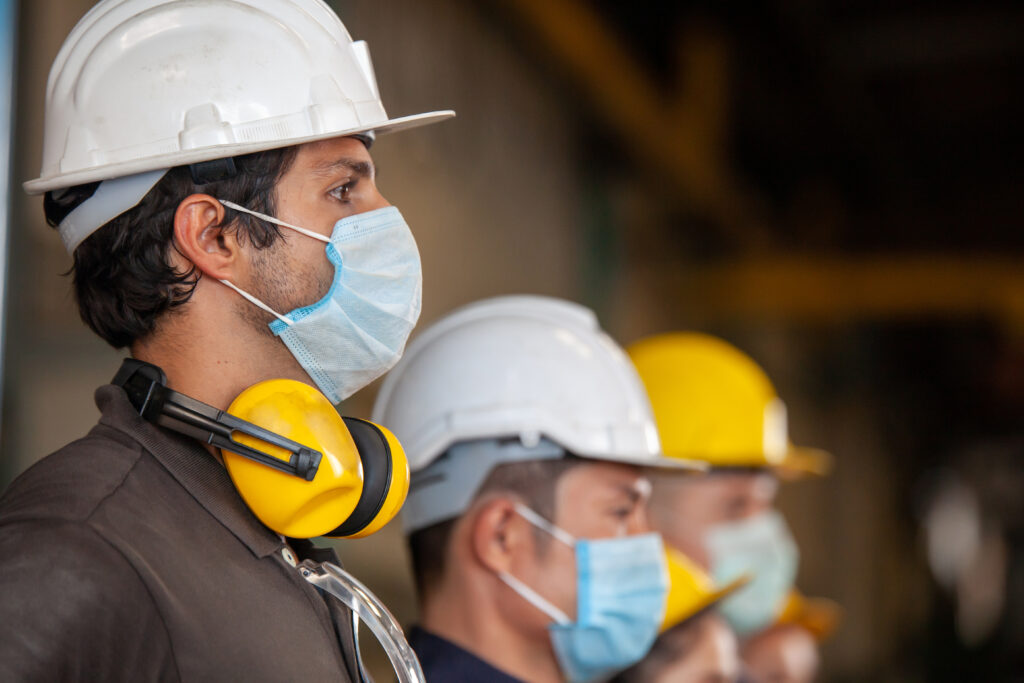Through many local or national crises, construction does not stop and often is at the front lines. Think of natural disaster situations like hurricanes, 9/11, and the COVID-19 pandemic. Construction workers can’t work from home, but contractors do have the ability to ensure that worksites meet enhanced safety standards.
Strong safety culture for contractors leads to big rewards for construction companies. Individual contractors and small companies need to develop and implement their own health and safety plans that can respond to any crises. A good plan will cover all aspects of onsite construction operations and activities and should be able to adjust to the project contract for each job. The biggest reward of having a strong safety culture is massive savings from projects completed without accidents, claims, and on time.
According to a new report from Dodge Data & Analytics, contractors are increasingly focused on jobsite safety and worker participation. The study showed that 73% of construction companies rely on supervisors and foremen to deliver safety training to workers indicating a need for the construction industry to make sure available industry tools are being fully utilized.
Over 80% of the contractors surveyed relied on the OSHA 30-Hour training program, even though it was not designed for that purpose. In response, The Foundations for Safety Leadership (FSL) module was developed to fill the gap, and more than 70,000 workers have received the FSL training since first introduced three years ago. Among the contractors that have implemented FSL training, 90% reported that it is effective in improving jobsite safety culture.
Construction safety starts at the top
A strong safety culture starts with owners. Safety depends on collaboration, education, and innovation. Owners are now writing safety requirements into construction contracts to mitigate risk. Some owners will not allow firms with poor safety records to bid on jobs. This criteria applies to everyone on the construction site, including managers and subcontractors.
The most successful construction companies have daily practices that promote safety culture before the day’s work begins. Teams begin every day with a safety huddle where safety professionals engage with site staff to address hazards and a plan to avoid, mitigate, and manage them. Some common site hazards that get addressed every morning include:
- Slips, trips, and falls.
- Contact with moving or fixed objects.
- Getting caught in or between machinery, trenches, or excavations.
- Electrocution from tools, powerlines, or underground utilities
These construction companies make training mandatory for all contractors and subcontractors. This includes training prior to arriving at the jobsite.
Train, train, and train again
Investing in training your workers is the easiest way to help improve your company’s safety culture. It sets the tone and tells your workers that you’re invested in their health and safety. Safety training is not an annual event; it should be a continuous and ongoing effort with an emphasis on reinforcing best practices.
Investing in good workers mitigates risk
Everyone who steps on a jobsite is responsible for safety, not only supervisors. Workers need to be aware that their individual actions affect everyone on the site. Employees should be encouraged to speak up and report unsafe conditions, near misses, or coworkers failing to follow safety protocols. Every worker should have the power to order a work stoppage to correct a safety issue.
Relying on incentive programs that reward workers for going so many days without an accident or injury can lead to workers underreporting. Rewarding workers for a proactive approach to safety results in fewer accidents and injuries. Use incentives to reward safety-conscious workers that follow safe working practices, attend safety meetings, wear protective equipment, and that report unsafe conditions and hazards. It will help improve the safety culture of your construction environment.
Even the best safety practices are not 100% foolproof
The best plans and practices mitigate risk substantially. However, mistakes and injuries still occur and lead to costly claims. Crane and scaffolding failure or collapse are but two examples of accidents that can prove very costly in terms of both money and, more importantly, loss of life.
McGowan Excess & Casualty protects companies with the best safety practices from the unexpected. Excess casualty insurance can help bridge the gap when extreme exposure surfaces. We specialize in writing Umbrella & Excess Liability products for a broad range of commercial customers. MEC underwrites on behalf of “A” Rated Carriers, on both Admitted and Non-Admitted paper, and is available in all 50 states.
Learn more about how our 100% “in-house” underwriting can provide you with superior service, competitive premiums, and broad coverage.


